Ingredient Ideology | TEMPTING TURKISH TREATS By: Dr. Kaviraj Khialani- Celebrity Master Chef.
/TEMPTING TURKISH TREATS
A Basic Introduction: One of my all-time favorite cuisines has been from Turkey, it is not only easy to prepare but has a lot of robust aromas and a great sense of satisfaction which is felt after cooking and serving it to food connoisseurs who not only relish the tempting delicacies but also appreciate it and share its goodness with loves ones and friends. Turkish Cuisine is one of the world’s top cuisines, joining the ranks of French, Chinese, Italian, and the like. Like the country’s cultural mosaic, the food of Turkey is very colorful and contains countless different influences and tastes. The cuisine of Turkey has continued to evolve over centuries, deriving influence from its rich history of lands that hosted first the Byzantine, and then the Ottoman Empires. Specific tastes in different regions of Turkey contribute to the complexity of the country’s cuisine. The availability of different Turkish food in some regions also helped to shape the foods common to that particular area.
An Overview of Turkey and its Food Culture: Every country and or continent is known for a particular style of food, variety of ingredients available/ being grown or out-sources etc which have influenced the food and recipes as well of that particular diaspora. Eastern Black Sea region, for example, is not appropriate for wheat production due to heavy rainfall; therefore, the residents developed dishes that rely mostly on corn and corn flour. Likewise, the Southeastern Anatolian region is famous for kebabs as a result of its abundant livestock. The Aegean region, known for its olive production, is famous for its delicious olive oil vegetable dishes and herbs; while pastries are the monopoly of Thrace. Istanbul has always attracted a large number of migrants from other parts of Turkey, relocating to the city in search of work. Because of this, Istanbul has become the cultural heart of Turkey, sharing the most delicious Turkish foods from each region in its unique cuisine. The Ottoman Turks had two meals a day. The first meal, which they ate between morning and noon was more like brunch. They would have the second meal of the day anytime between late afternoon and evening; this meal consisted of meat dishes served with vegetable and legume accompaniments such as stuffed eggplant or bulgur pilaf with vegetables. In Turkey, nowadays most families enjoy 3 meals a day. Weekday breakfasts are basic and quick but weekend breakfasts where the family comes together are large and consist of many different foods.
Lunches in Turkey are usually made of seasonal dishes, soup, salad, etc. Dishes that require time and effort to prepare are not common at this meal. Meat-based dishes, as well as desserts, aren’t served at lunches. Dinners are usually a more elaborate and richer one because it’s the only time when family members have been working in fields or at another job all day come home together. In Turkey, there is another unofficial meal called “yatsilik” which is eaten after dinner around 9 or 10 pm. Nuts, dried, and fresh fruits are usually served with black Turkish tea. Some of the most common foods served for yatsilik are seasonal fresh fruits, dried plums, figs, dried fruit pulps (grape, apricot or mulberry), and nuts like pistachios, almonds, roasted chickpeas, roasted pumpkin seeds and sunflower seeds, walnuts, and hazelnuts.
Turkish Bread: Among the varied starch preparations, Bread is yet another indispensable part of every Turkish meal. This has been true for thousands of years, and it remains the most important component to every meal: breakfast or dinner, without bread your Turkish meal will lack that something special. It is eaten, whether it is particularly suited to the meal, or not. Turkey has the highest bread consumption per person in the world. Bread consumption a year is 199.6 kg (440 lb) per person. Turkish people eat more than three times their own body weight in bread annually.
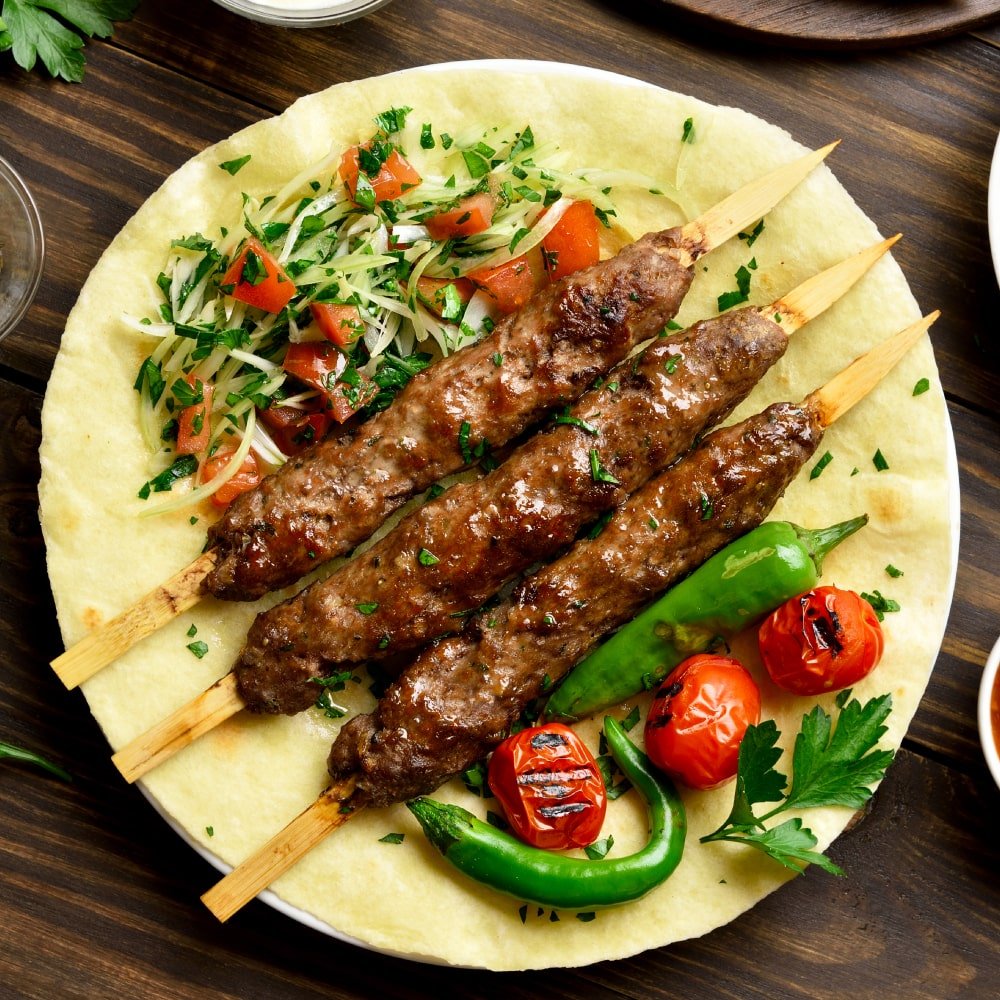
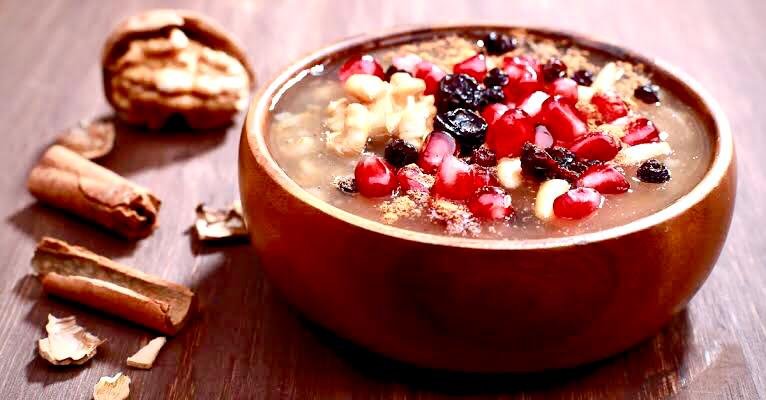
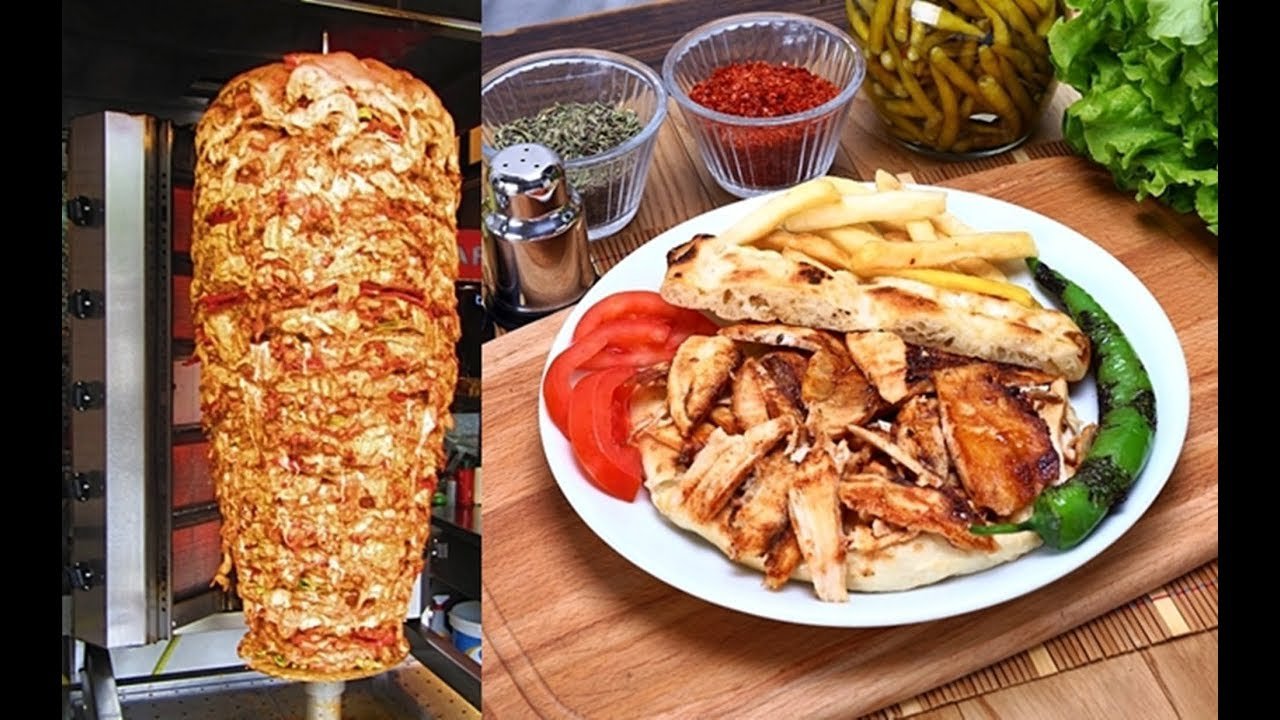
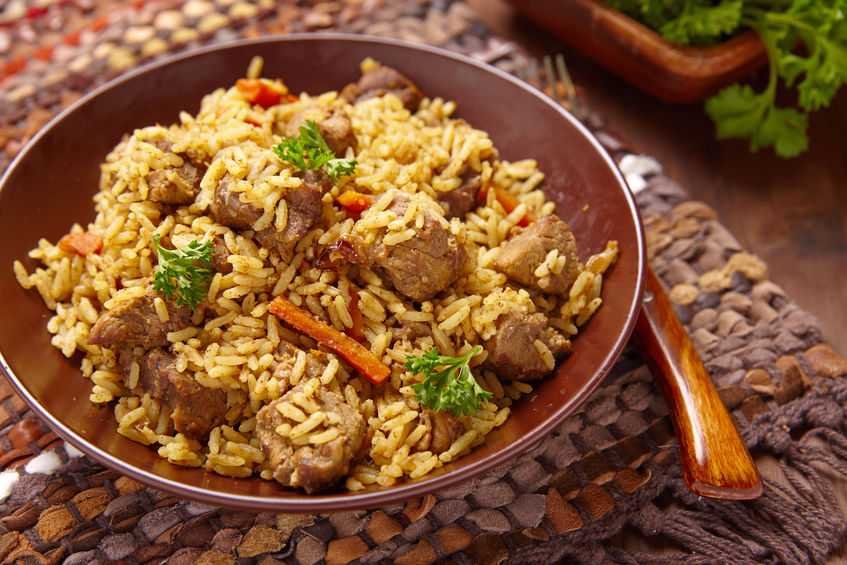

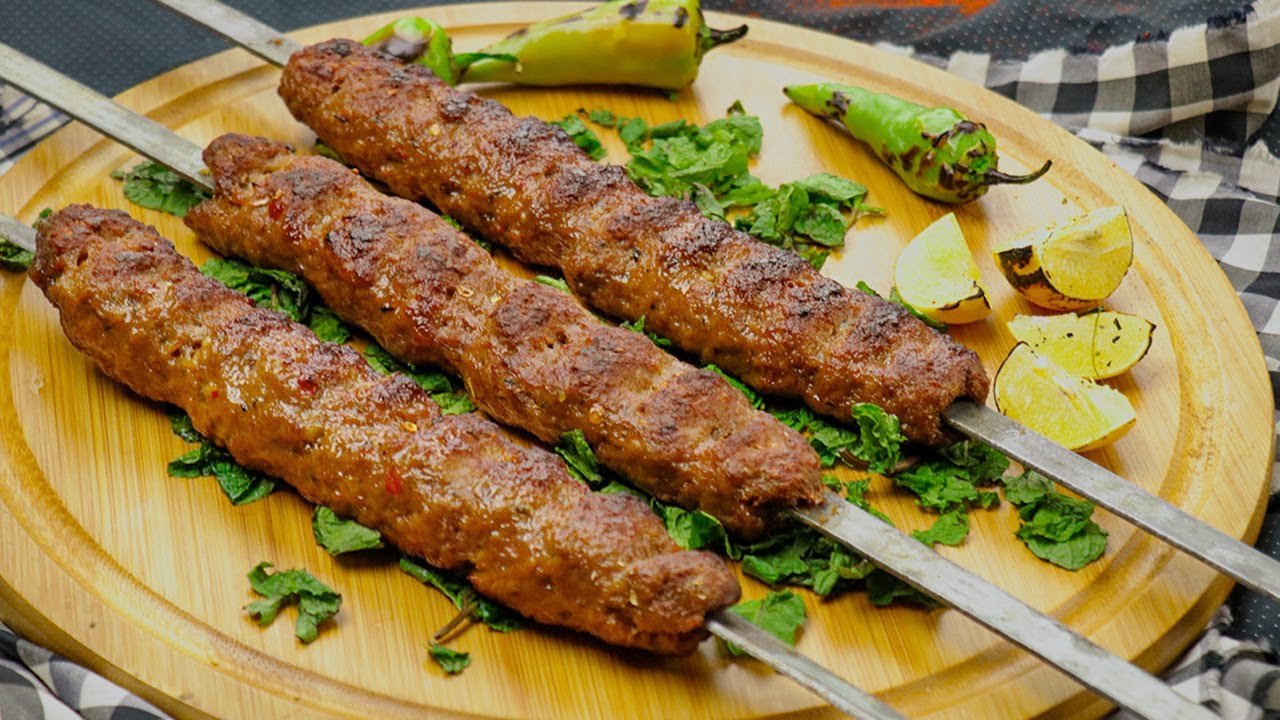
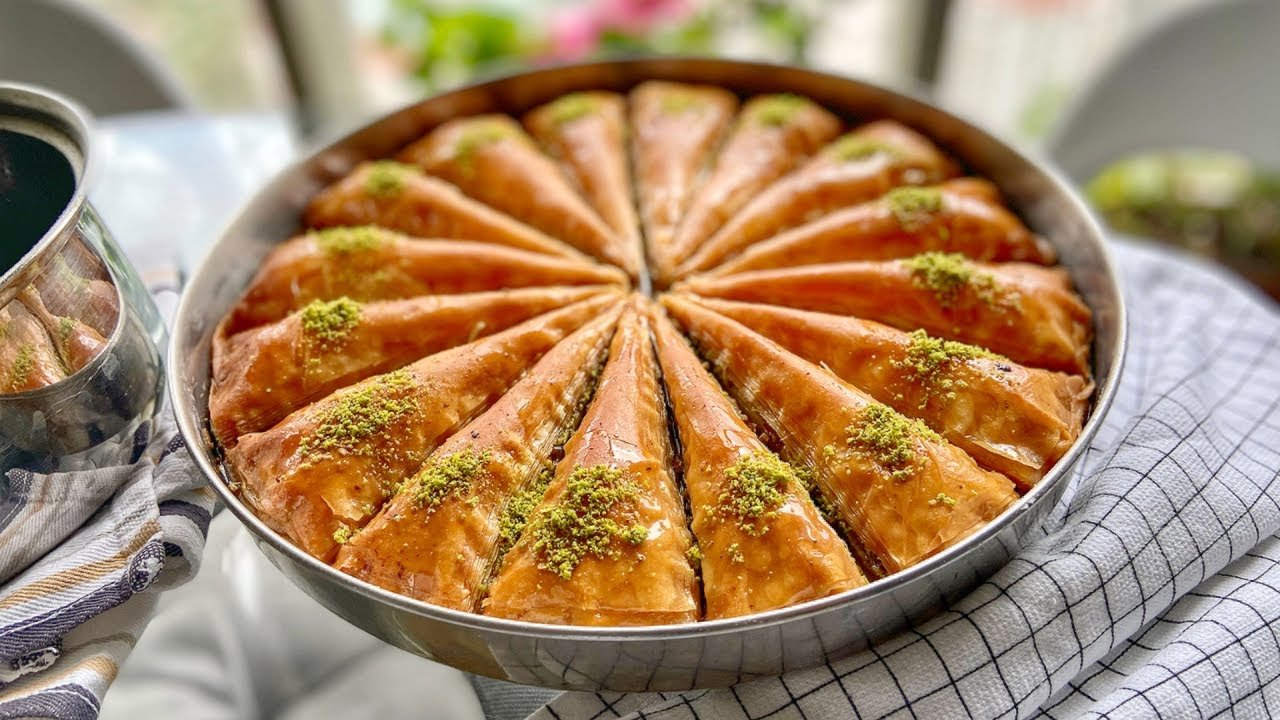
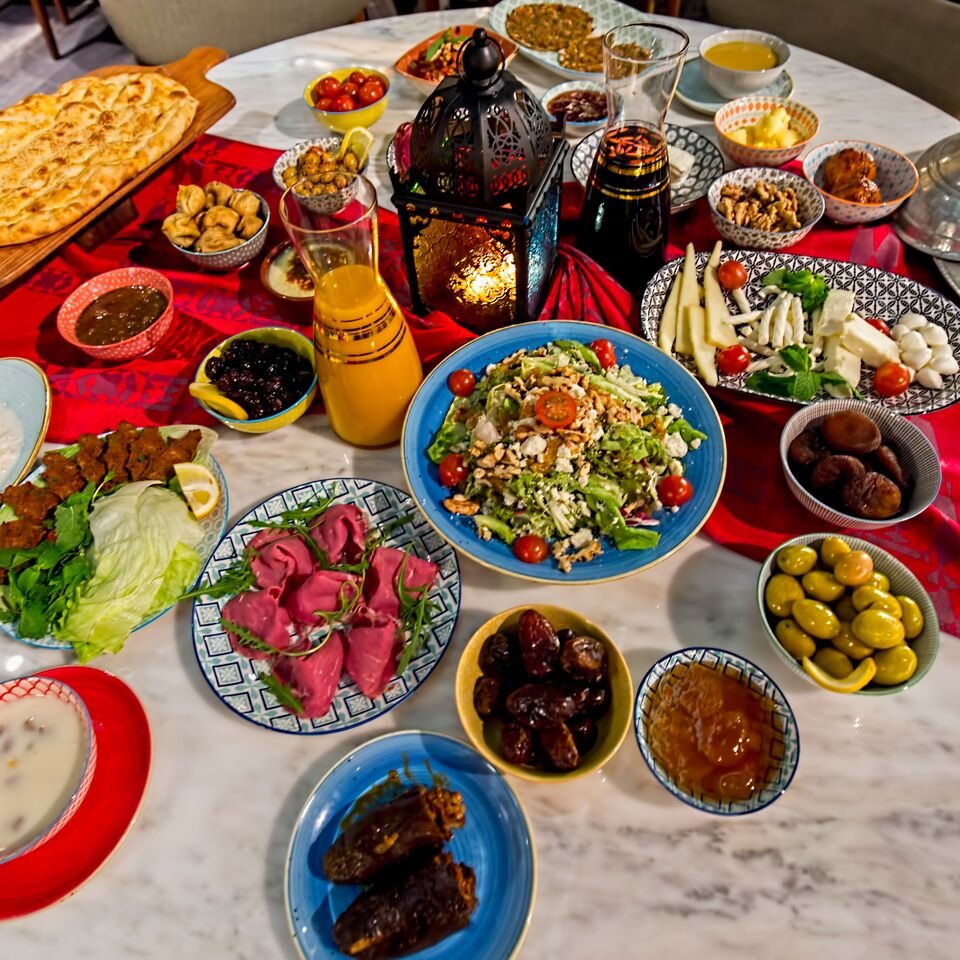
A few of the key ingredients used in Turkish cooking include:
Vegetables: okra, pea, green peppers, tomato, mallow, artichoke, carrot, cucumber, chicory, spinach, zucchini, cauliflower, celery, asparagus, cabbage, mushrooms, parsley, lettuce, potatoes, beets, eggplant, leek, arugula, garlic, purslane, onion, radish, Legumes: broad beans, beans, chickpeas, lentils, Meats: lamb, beef, chicken, fish
Spices: rosemary, red pepper, nigella seeds, thyme, cumin, mint, cinnamon, coriander, turmeric, sumac, black pepper, clove, poppy seeds, saffron, sesame seeds, Nuts: pistachios, chestnuts, almonds, hazelnuts, walnuts, Grains: rice, bulgur, Oils: Sunflower oil, olive oil, hazelnut oil.
Turkish Cuisine has a wide variety of foods, including cereals, pastries, vegetables, and self-growing herbs mixed with meat. There are also many soups and other traditional Turkish foods that incorporate butter, sunflower oil, and olive oil as an ingredient. Turkish cuisine has also its own unique types of healthy food, such as grape molasses, yogurt, bulgur, etc. Rice is used extensively in Turkish cuisine. It is featured in many of the stuffed meat and vegetable dishes as well as being served as pilaf, and Turkish people have very high standards for its preparation. A great-tasting pilav is proof of a Turkish housewife’s good cooking skills.
Pilaf’s in Turkey are usually cooked plain only with butter but there are also those exotic rice dishes flavoured with spice, nuts, and fruits—others made with meat, fish, and vegetables, are known as sultan pilavı. Pilaf’s are usually served as an accompaniment to the main course of meat or fish, but some more substantial pilaf’s, like yufkalı pilav and safranlı midyeli pilav can be served with a salad to make a full meal, iç pilavı, with currants, pine nuts, and calves liver, is served all over Turkey, especially on special occasions. Acılı Bulgur Pilavı is actually made with bulgur, or cracked wheat, which has a nutty flavor. Rice with chickpeas is a popular and nutritious type of rice dish in Turkey. In the summer, some pilafs are served cold with plain yogurt.
The preparation of pilaf is as much an art today in Turkey as it was in the sultan’s kitchen in Ottoman times.
Vegetarian in Turkish cooking: Turkey is no stranger to vegetable-based and vegetarian cuisine. The country’s cooking culture often uses vegetables and wild-grown greens, cooked as vegetarian dishes or with meat for the protein hit that can stretch precious supplies of food items like beans and rice. Aegean and Mediterranean regions are well known for their warm and sunny climate which allows growing vegetables year-round. Some of the most common vegetables grown and eaten in Turkey are zucchinis, eggplants, cauliflower, bell pepper, green beans, spinach, artichokes, carrots, and celery. Fresh vegetables are cooked in many ways, but they mostly fall into one of these categories: meatless vegetable dishes (including vegetables with olive oil), boiled, fried, and roasted veggies. Fried vegetables are usually served with garlic yogurt sauce.
A typical vegetable dish is prepared with a base of olive oil, chopped onions, pepper paste or tomato paste (concentrated tomato sauce), and fresh tomatoes. Usually, the vegetables and hot water is added to this base and prepared as a pot dish. Minced meat can be added to most vegetable dishes except the ones cooked with olive oil. Olive oil dishes are also eaten cold and having meat in them is not a great idea.
Here are a few popular Vegetarian dishes from Turkish Kitchens:
Karniyarik: Large eggplant stuffed with ground beef, chopped-up onions, garlic, tomatoes, and green peppers and cooked in oven.
Kizartma: Deep-fried vegetables (usually eggplant, zucchini, potatoes, green peppers) served with yogurt sauce.
Mücver: Graded vegetable (the most popular one is zucchini) mixed with egg and flour and deep-fried.
Lahana Sarmasi: Rolled white cabbage, stuffing is usually with onions and rice and may have minced beef if preferred with meat.
Kapuska: Thin sliced white cabbage cooked with onions and tomato sauce. Can be cooked with minced beef or lamb.
Ispanak Yemegi: Onions, spinach, and rice cooked with tomato sauce (tomato paste). Usually eaten with garlic yogurt.
Türlü: A vegetable dish made with eggplant, zucchini, potatoes, tomatoes, and onion.
Meat Cookery in Turkish kitchens: From the delicious chicken dishes to beef and lamb, Turkish cuisine is definitely a carnivore’s paradise. The meat cooking methods are also varied – from roasted meats cooked in spiced sauces or stews with vegetables to skewered kebabs grilled over slow-burning coals. The kebabs and meatballs are two other very popular ways of preparing meats in Turkey.Almost every city in Turkey has its own style of kofte and kebab which consists of spiced chicken, lamb, or beef. Cooking lamb meat with bulgur, (cracked wheat) and legumes is also a common way of preparing main meals in Turkey. If the dish has lentils, beans, or chickpeas, as the dish is already very nutritious and can be made quickly, a small amount of meat is used just to give the dish a meat flavor.
Lamb was the most popular meat in Ottoman cuisine. The beef was only used to make sausages and dried meat (pastirma). In today’s Turkish cuisine, besides lamb, beef and chicken meat are also used in abundance. Especially chicken meat has become the most popular meat in Turkey in recent years due to its cheap price compared to red meat.
Kebabs in Turkish cuisine:
In Turkey, kebab is cooked at home as well as in restaurants. It is either cooked on skewers over an open flame but it may also be prepared in pots drily without any water. The pot style kebabs are a more common type of kebabs cooked at home as it’s an easier way to prepare kebabs. Skewered kebabs often dined at restaurants, but they are also the quintessential dish for any family picnic where a mangal (barbeque) is ready with charcoal open flame. Kofte made with ground beef or lamb, grilled meats, skewered meats, and grilled tomato, peppers, and eggplant are also cooked for family picnics. Kebab generally refers to any dish of meat, fish, or vegetables, which are grilled on a skewer or roasted using a rotisserie. In Turkey, the word kebab extends to include any of these dishes cooked over, or next to, a flame. It consists of both small and large cuts of meat, as well as ground meat. Kebab in Turkey can be served on plates (known as porsiyon), in sandwiches, or even in wraps (known as durum).
1. Shish Kabab- A traditional and familiar Turkish kebab of meat and vegetables, generally cubed and threaded onto a skewer before being grilled and served with bread and rice with salads. Çöp şiş is a variety of this popular kebab, made with smaller pieces of meat and generally cooked on wooden skewers, as opposed to iron.
2. Adana Kabab- Hailing from the South-Eastern Turkish province of the same name, Adana kebab is a spicy (read: hot) kebab made from ground mince formed over a wide skewer and grilled over charcoals. A milder version originates from a nearby town and is known as Urfa kebab. Both kebabs are served with grilled vegetables and bulgur pilaf.
3. Iskendar Kabab- This kebab inspired Iskender Efendi to invent the vertically cooking kebab and originates from his seaside hometown of Bursa. Iskender kebab is essentially döner kebab, served with a slathering of melted butter over a bed of bread, with yogurt on the side.
4. Doner Kabab- The World-famous Turkish kebab means ‘rotating’ kebab in Turkish. It is made from lamb, chicken, or beef, slowly roasted on a vertical spit, and then thinly sliced off. Döner is served on a plate with salad and rice or potatoes; in bread like a sandwich; or in a wrap known as durum.
Mezze and salads: Vegetables are a very important part of the Turkish diet, and fresh salads are an essential part of most meals. They are served with the main course. Most salads are simply made with leafy greens, tomatoes, cucumbers, green peppers, onions, and whatever other vegetables are in season. Salads made with beans, grains, and vegetables are frequently a part of a winter meze. Edible wild greens such as dandelions are often cooked and served cold with a drizzle of extra-virgin olive oil or lemon juice.
Olive oil in Turkish cuisine. Today, meze culture is very common in Turkish taverns and restaurants. Hot and cold Turkish mezes ordered to the table in small plates and are shared by everyone at the table. Turkish meze can be served with any kind of beverage. Turkish wines and Turkish raki, make great accompaniments to appetizer mezes. Wild herbs with yogurt sauce, pickles, ezine cheese, melon, vegetable dishes with olive oil, stuffed grape leaves, Haidari, lakerda, arugula salad, tomato and onion salad, roasted eggplant salad, marinated fish, octopus’ salad, shrimp cuts, sautéed wild herbs, pilaki, fava, olives, şakşuka, celery salad, artichokes with olive oil, ezme salad are the best examples of mezes in Turkey. Turkish people give careful consideration to the acid, fat, and salt ratio of the different mezes when ordering many of them together. Some of these mezes mentioned above are dipping mezes and usually served with toasted bread.
Turkish Sweets & Desserts: Baklava and kadayif, those sweet, nutty, flaky pastries, are the most familiar Turkish desserts to the rest of the world. The most famous baklava types are from the southeastern Turkish cities of Gaziantep and Urfa. They prepare it with painstaking care from rolling the thinnest possible sheets of fresh filo dough to selecting and grinding the nuts. Baklava, until the 1990s, was a celebration dessert in Turkey only served during the religious holidays of Ramadan and Sacrifice feast.
There are 3 main types of Turkish desserts: Syrupy desserts: Syrupy desserts are desserts made with dough and usually by pouring sugar syrup on them. Baklava, tulumba, kadayif, sekerpare, lokum (Turkish delight), revani, irmik tatlisi, tas kadayif, lokma, and Burma are some of the popular syrupy deserts. Milky desserts: Milk desserts, which are lighter compared to syrupy desserts, are both easy to eat and easy to digest. Keokuk, sakizli muhallebi, sutlac, tavukgogsu, kazandibi, dondurma (Turkish ice cream), and gullac are some of the popular milk based desserts in Turkey. Fruit desserts: hosaf, komposto, kabak tatlisi, ayva tatlisi, pestil are among the popular fruit-based Turkish sweets.
Turkish Beverages: It is common to think that as the majority of Turks are Islamic, alcoholic beverages wouldn’t be common. However, they’re just about equally available in Turkey as anywhere in Europe. Rakı and beer make up a large portion of alcohol consumption in Turkey. The country has long been producing great wines in a number of regions and wine production in Turkey also goes back thousands of years ago. In Turkey, there are two dominant types of non-alcoholic drinks: black tea and Turkish coffee. Turkish people also love to drink herbal tea as well, especially on cold winter days. Mint, sage, ginger, thyme, chamomile, rosehip teas are some of the popular ones.
Turkish Tea:
Turks love tea, and most Turks drink many cups a day. Turkish tea is always offered first to visitors and guests to all homes and businesses. Turks prepare tea by brewing it in a teapot (not with ‘tea bags’), preferably porcelain, over a kettle, and a perfectly brewed Turkish tea should be a deep red color. Although tea can be found served in porcelain cups at the major hotels and cafes, Turks prefer to have their tea served in glass cups. Although instant coffee (which Turks call ‘Nescafe’) is quite common, nothing can take the place of a good cup of tea. Tea gardens abound in Istanbul. These open-air gardens, usually located in areas with stunning panoramic views, also serve fruit juice, colas, and some Turkish food like sandwiches and ‘tost’ (grilled sandwiches). More traditional tea gardens serve their tea with a semaver (a metal teapot), and in some tea gardens, you’ll even find nargile (water pipe) for smoking an array of fruit-flavoured tobacco. The tea gardens of Moda and Emirgan are popular choices among café-goers.
Turkish coffee- Turkish coffee is served in small porcelain cups (resembling espresso cups) and always with a glass of water. It is not usually consumed with breakfast; but, more commonly, it is enjoyed after meals with something sweet, usually Turkish delight or chocolate. Turkish coffee is traditionally prepared in a small copper pot called a cezve, and is made by boiling an extremely finely ground coffee together with water and sugar. The coffee is served according to your taste – sade (without sugar) or sekerli (sweet). While drinking you should sip the coffee lightly, to leave the coffee grounds at the bottom of the cup. Afterward, you can perhaps find someone who can read your future from the coffee grounds, which is still very popular in Turkey among both the older and younger residents.
On a Concluding Note & A Few Notes to know of on a Turkish Table: Before eating the food in Turkey it is common for the chef and others at the table to wish each other ‘afiyet olsun’, which is essentially the same as saying bon appetite. As a complement to the chef, the diners at the table will also say ‘elinize saglik’, which literally means ‘health to your hands’ but is interpreted as a sign of endearment or ‘very delicious, well done’. Finally, before drinking, everyone will shout ‘serefe’, meaning cheers! As we all know India too has been widely open to accepting culinary heritage and recipes from across the globe and we do find a few restaurants/ outlets too in various parts of our country who serve a few of the well-known Turkish delicacies under various categories to relish at their very best!
Happy Cooking:
Chef Kaviraj Khialani.
Creative Cuisine International- Mumbai.








